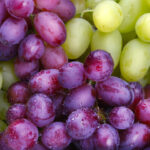Report sheds burning light on northern Chilean drought impact

Known for its early season grapes, citrus fruit, avocados, pomegranates and olives, Chile's northern region of Coquimbo has been under strain from drought for nine years, but in late 2014 the Center for the Study of Arid Zones (CEZA) reported an 80% depletion of reservoirs, compounded by a 60% decline in mountain snow cover. What this means for growers has been revealed by a recent report published by the country's Northern Agricultural Society (SAN). 
The society reports that out of the 121,000 hectares of planted surface area in the region, irrigation has ceased for 73,000 hectares due to a drought that has left debt and unemployment in its wake for the agricultural sector.
SAN president María Inés Figari, who is also a director at fruit growers' association Fedefruta, says the report shows how the worst water crisis in five decades has affected rural communities.
The report, compiled by supervisory boards in the region, reveals the effects are worse still in the province of Limarí, with only 20,000 irrigated hectares out of a total of 71,000 hectares.
"The areas where crops have been left to dry are Cogotí, Huatulame, Punitaqui and Pama, as their water supply for this season is zero," the document said.
In the Elqui Valley, also known for production of Chile's iconic Pisco brandy, 41% out of 27,000 hectares have been left dry, while the percentage is higher at 45% in the Choapa Valley. As a result, productivity in Elqui is now 55% of what it used to be, while the percentage is even lower in Choapa (45%) and Limarí (20%).
Impact on fruit industry and employment
The report says the most damaged agriculture sector has been the fruit industry.
"Severe pruning management has been undertaken (only leaving "stumps") in avocados, while other crops have received survival irrigation and in the most extreme cases entire plots have been left to dry," the report said, highlighting the region had 53,000 hectares of fruit crops, making it Chile's sixth-largest fruit-growing region in terms of surface area.
As a result, the amount of agricultural labor positions has declined from 59,000 in 2007 to 44,000 in 2014.
"This has led to poverty in rural areas and urban migration," SAN executive secretary Daniela Norambuena said.
Speaking about the issue with a range of local government representatives in the region, Figari proposed measures that could be used to overcome the crisis, including debt rescheduling, a special disaster relief fund and tax remission, as well as medium-term projects such as a "water highway" to transfer the valuable resource from the country's south.
"Seeing this diagnosis and proposals for the agricultural sector was a valuable opportunity. Many of them are being addressed in the Government's Water Scarcity Plan, and several others imply legislative efforts and changes that we should analyze together with parliamentarians and all stakeholders in the private sector," said Limarí Governor Cristian Herrera.
María Inés Figari was pleased with the response from government officials to the report.
"I really never imagined that we would have so much support from politicians. Today their words made a firm commitment so that working together will be a reality," she said.
"We shouldn't think more. Now we have to act, so that the State has to lend a hand to agriculture like it once did with banks. We cannot allow agriculture in this region to die."
Photo: Jorge Barrios, via Wikimedia Commons















































